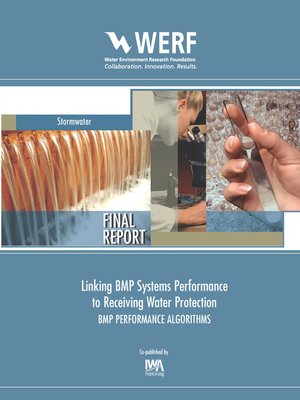Linking BMP Systems Performance to Receiving Water Protection
ebook ∣ BMP Performance Algorithms · WERF Research Report
By Larry A. Roesner

Sign up to save your library
With an OverDrive account, you can save your favorite libraries for at-a-glance information about availability. Find out more about OverDrive accounts.
Find this title in Libby, the library reading app by OverDrive.



Search for a digital library with this title
Title found at these libraries:
| Library Name | Distance |
|---|---|
| Loading... |
While substantial information exists regarding many of the technical activities associated with developing stormwater management plans and demonstrating regulatory compliance, there is no unified modeling and analysis framework for linking receiving water quality to watershed management activities. This missing link has led many stormwater practitioners to select and design BMPs utilizing a variety of watershed and BMP analysis tools without specifically evaluating whether the proposed solutions will achieve receiving water goals. Consequently, a pressing need exists for a decision-support tool that links watershed models, BMP analysis tools, and receiving water quality models in an over-arching framework to assist stormwater managers, designers, regulators and others in locating, selecting, and conceptually designing BMPs to specifically address receiving water issues.
This project includes the development of a modeling tool called the BMP Selection/Receiving Water Protection Toolbox (Toolbox). After selecting an initial representative list of water quality parameters and stormwater BMPs, the Team compared and evaluated algorithms for the BMP Module of the Toolbox. Three general types of algorithms were considered for BMP performance modeling: (1) hydraulic algorithms - these determine the volumes captured, stored, and bypassed by the BMP, (2) hydrologic algorithms - these determine the volume losses within the BMP due to infiltration and evapotranspiration and/or use (in the case of cisterns), and (3) treatment algorithms - these determine the concentration reductions provided by the BMP. Based on applicable unit treatment processes, available performance data, and desired level of user input requirements, BMP modeling approaches have been recommended.
This project includes the development of a modeling tool called the BMP Selection/Receiving Water Protection Toolbox (Toolbox). After selecting an initial representative list of water quality parameters and stormwater BMPs, the Team compared and evaluated algorithms for the BMP Module of the Toolbox. Three general types of algorithms were considered for BMP performance modeling: (1) hydraulic algorithms - these determine the volumes captured, stored, and bypassed by the BMP, (2) hydrologic algorithms - these determine the volume losses within the BMP due to infiltration and evapotranspiration and/or use (in the case of cisterns), and (3) treatment algorithms - these determine the concentration reductions provided by the BMP. Based on applicable unit treatment processes, available performance data, and desired level of user input requirements, BMP modeling approaches have been recommended.







